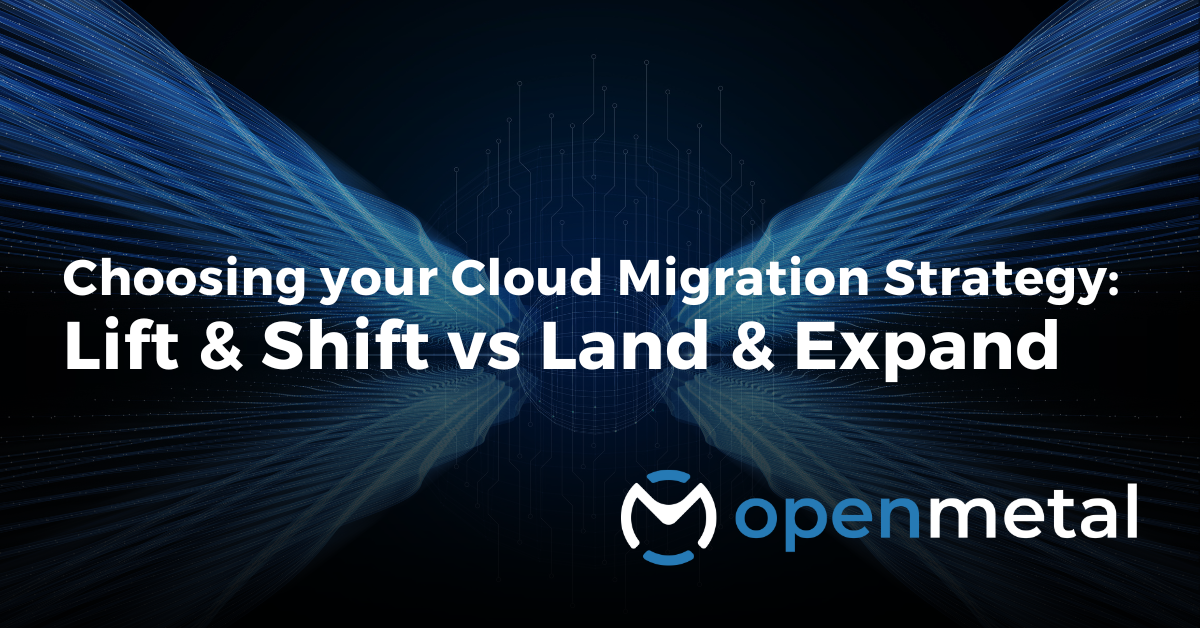
Cloud Migration Strategies and Approaches
Lift and Shift
Applications and data are transferred from one cloud environment to another with minimal changes. This approach involves taking the application as it is and transferring it to the new cloud environment without modifying it to take advantage of the new cloud platform’s features.
Land and Expand
The application and its core framework is re-built, re-configured and re-architected to take advantage of the new cloud platform.
Proposing a Hybrid Cloud Migration Strategy
Organizations tend to take one of the above migration approaches depending upon complexity of the use-case as well as the capabilities of the targeted cloud platform. However, it would be in the best interest of most organizations to consider a more flexible approach, especially for cloud-native applications.
Adopting a more adaptable cloud migration strategy offers a range of advantages, as it enables organizations to tailor their approach according to the unique needs of their applications and infrastructures. This strategy can be viewed as a “hybrid” model, integrating elements from both “Lift and Shift” and “Land and Expand” methods.
By capitalizing on the strengths of each technique, organizations can facilitate a more seamless migration experience and enhance their cloud infrastructure over time. It is also common to hear the term cloud repatriation – and this is for when a workload may not be a fit for the cloud provider you initially selected. Check out this article on Cloud Repatriation Options – Colo vs On-Premise vs Hosted Private Cloud.
Factors to Consider When Developing a Flexible and Hybrid Cloud Migration Strategy
Application complexity
Analyze the architecture and dependencies of each application to determine the appropriate migration approach. Simpler applications may only require a “Lift and Shift” approach, while more complex applications might benefit from the “Land and Expand” methodology.
Cloud platform capabilities
Understand the features and limitations of the target cloud platform. If the platform offers significant benefits that can only be leveraged through a redesign or re-architecture, it may be worthwhile to consider the “Land and Expand” approach.
Time and resources
Evaluate the available resources and time constraints. If there’s limited time or budget for the migration, a “Lift and Shift” approach may be more appropriate. However, if resources allow, investing in a “Land and Expand” approach could lead to long-term benefits.
Business priorities
Align the migration strategy with business objectives. This may involve prioritizing certain applications or services for re-architecture, while others are simply transferred with minimal changes.
Security and compliance
Ensure that the chosen migration approach meets security and compliance requirements. Depending on the industry, different regulations and standards may apply. A flexible approach can help organizations address these concerns by allowing them to adapt their migration strategy to specific security and compliance needs.
Scalability and performance
Assess the scalability and performance requirements of the applications being migrated. A flexible approach can help organizations optimize their applications for the cloud, taking advantage of the platform’s scalability and performance features where needed.
Training and skillset
Consider the skillset of the IT team responsible for managing the migration process. A flexible approach may require additional training or hiring of new personnel with specialized knowledge in cloud-native technologies and best practices.
Post-migration optimization
Plan for ongoing optimization and improvement after the migration is complete. A flexible approach can help organizations continuously refine their cloud infrastructure, making use of new features and capabilities as they become available.
Monitoring and management
Implement monitoring and management tools to ensure the smooth operation of applications and services after migration. A flexible migration approach may require different monitoring and management strategies for different applications, depending on the chosen migration method.
Vendor lock-in
Consider the potential for vendor lock-in when choosing a cloud platform and migration strategy. A flexible approach can help organizations minimize this risk by allowing them to adapt their infrastructure and application design to be more portable across different cloud providers.
By adopting a flexible cloud migration approach that combines elements of both “Lift and Shift” and “Land and Expand” strategies, organizations can better align their migration efforts with their unique requirements and constraints. This approach can help maximize the benefits of cloud migration while minimizing risks and challenges.
Engage With OpenMetal
Test Drive a Cloud
Get a limited-time free trial to an on-demand hosted private cloud. Business email required. Other eligibility requirements apply.
Connect With Our Team
Our team is standing by to assist you with any questions you have about how our on-demand cloud platform can help your business.



































